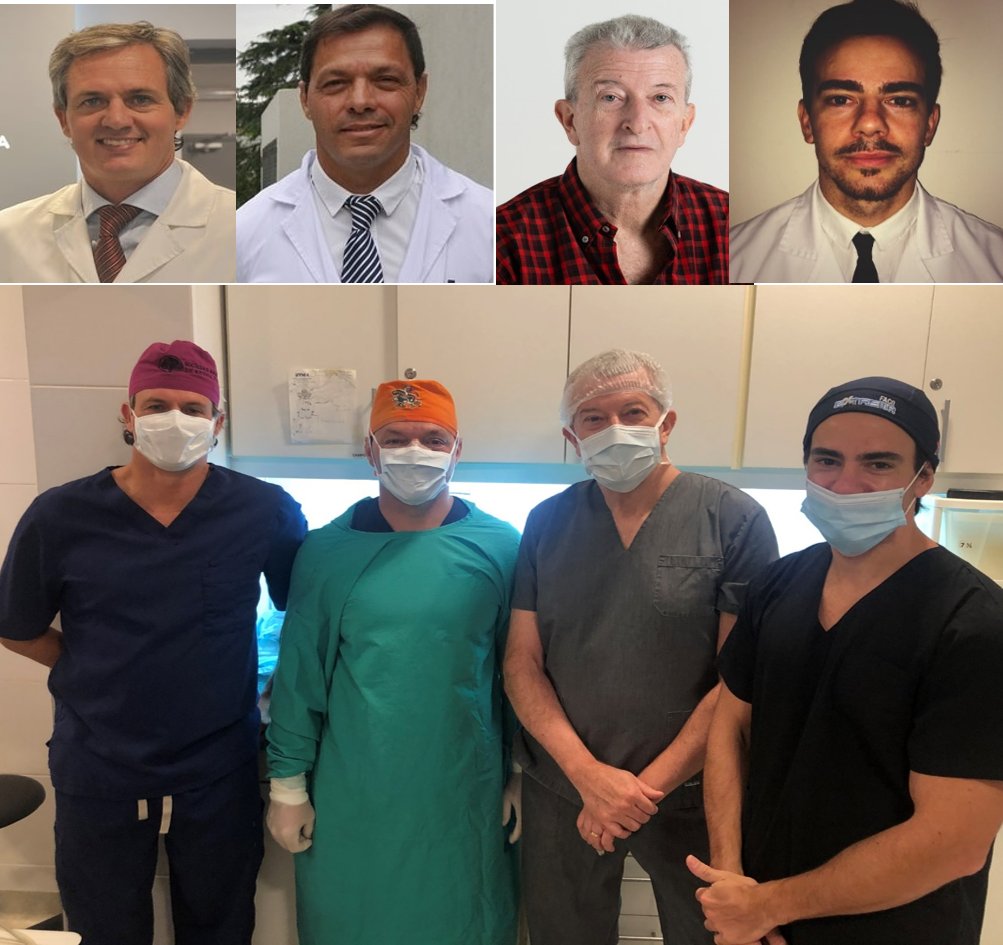
| Área: | Inmunología |
| Grupo de Trabajo/Laboratorio: | Procesos inflamatorios de la superficie ocular |
| Nombre y Apellido: | Horacio Marcelo Serra |
| Cargo docente: | Profesor Asociado (DE) |
| Categoría CIC CONICET: | Investigador Principal |
| Integrantes: | Pablo Moro (investigador médico); Esteban Medina (investigador médico especialista); Mariano Iros (investigador médico especialista) y Juan Lopez (investigador beca doctoral) |
| Descripción: | The term “pterygium” is a Latinized version of the Greek word “pterygion” meaning “small wing”. Pterygium comprises a wing-shaped fibrovascular tissue that grows progressively from the corneoscleral limbus to the center of the cornea. A fully developed pterygium presents a well-formed head (apical aspect present on the cornea), a body (conjunctival aspect extending between the limbus and the canthus), and a neck (limbal aspect). Pterygium can be classified morphologically as atrophic, intermediate or fleshy, and histologically as angiomatous, fibrous or mixed. The epithelium is normal, thinned, hyperkeratotic or hyperplastic, and the stroma exhibits nodular elastotic degeneration. Surgical excision is the only effective treatment, but recurrence is frequent. The term “pinguecula” originates from the Latin word “pinguis,” which means grease. It is a well-defined nodular lesion that occurs near the corneal limbus in the interpalpebral fissure. Although it does not affect vision, it may cause cosmetic complaints and surgical excision may be considered for cosmetic reasons. Pinguecula is much like pterygium, except that growth of the lesion does not cross into the cornea. Pinguecula lacks vascularization in grade 0 and grade 1, but grade 2 is highly vascularized and presents as an elevated lesion. Ophthalmoheliosis disorders occur more commonly in people that reside close to equatorial latitudes, where UVR intensity is highest. The so-called “pterygium belt” lies between 37° north and south of the equator. Pterygium and pinguecula occur at greater incidence in older individuals and commonly cited risk factors include time spent outdoors and exposure to wind and dust. A wide range of other risk factors has also been proposed for pterygium. Environmental cornea degeneration (ECD) has been named at least 27 different ways according to presumed aetiology, geographic area, clinical presentation, nature of deposits, eponymous delineation, or work activity. In the international literature, the most common name given to this condition has been Climatic Droplet Keratopathy (CDK). CDK occurs in individuals who work outdoors most of the time. The first description of a corneal disease that may have been CDK was made by Baquis at the end of 19th century 1. Since then, the disease has been described in different parts of the world but not necessarily in regions that share the same climate. More recently, our group has found moderate forms of the disease in northwest Argentinean Patagonia. Although the name most used by the international scientific community has been CDK, our research group has undeniably shown that this degenerative disease is not associated with a climatic condition, but rather with environment. In this sense, a regularization in the current CDK nomenclature could be considered a more appropriate one. It is worth considering that Environmental Cornea Degeneration (ECD) may be a more correct name for this corneal pathology than Climatic Droplet Keratopathy. |
| Resumen: | We have been studied the molecular mechanisms involved in these 3 inflammatory surface ocular diseases using Omics analysis. |
| Contacto: | horacio.serra@unc.edu.ar |



